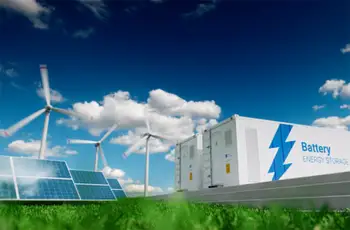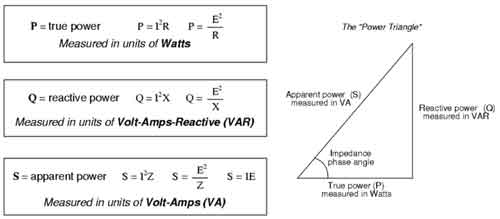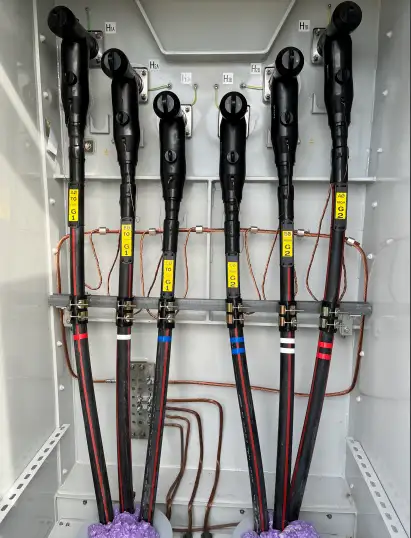Gravity Energy Storage Explained
By R.W. Hurst, Editor

Energy Storage Systems Course
Our customized live online or in‑person group training can be delivered to your staff at your location.

- Live Online
- 12 hours Instructor-led
- Group Training Available
Download Our OSHA FS3529 Fact Sheet – Lockout/Tagout Safety Procedures

- Learn how to disable machines and isolate energy sources safely
- Follow OSHA guidelines for developing energy control programs
- Protect workers with proper lockout devices and annual inspections
Gravity Energy Storage stores renewable electricity by lifting and lowering heavy masses, converting potential energy into power. It supports grid stability, clean energy storage technologies, and the integration of long-duration renewable energy sources.
What is Gravity Energy Storage?
Gravity energy storage is a renewable energy technology that uses gravitational potential power from lifted weights to generate electricity when needed.
✅ Provides long-duration, large-scale renewable storage
✅ Enhances grid stability and efficiency
✅ Reduces reliance on fossil fuel backup
Energy Storage Systems Training
Gravity Energy Storage (GES) is an innovative approach to energy storage (ES) that utilizes the potential energy of heavy masses to store energy. By elevating masses, electricity is stored as gravitational potential energy, expressed as E = m × g × h (mass × gravitational acceleration × height). When released, this power converts into kinetic energy, which then generates electricity. GES systems have high energy density, long lifespans, and low environmental impact. Although they require significant infrastructure and suitable locations, they are emerging as cost-competitive solutions for long-term storage. With the ability to support renewable energy sources, GES is a promising technology for sustainable power systems. GES is one of many innovative methods in the broader energy storage sector that support the integration of renewable power and grid stability.
Renewable energy sources, such as solar and wind, are expanding rapidly; however, their intermittent nature makes reliable storage solutions essential. Energy storage systems (ESS) bridge this gap by storing surplus power and supplying electricity during periods of low output. Among these technologies, GES has gained attention as a scalable, durable, and environmentally friendly option. In this article, we explore what GES is, how it works, its advantages and disadvantages, examples, and its potential future role. Long-duration storage solutions like GES are critical for modern grids, complementing other strategies discussed in energy storage and the grid.
Sign Up for Electricity Forum’s Energy Storage Newsletter
Stay informed with our FREE Energy Storage Newsletter — get the latest news, breakthrough technologies, and expert insights, delivered straight to your inbox.
How Does it Work?
GES operates by storing electricity as gravitational potential energy. Heavy masses are raised during periods of surplus electricity, and when power is needed, the masses are lowered, releasing kinetic power that drives generators. Efficiency depends on minimizing energy losses during lifting and lowering, with round-trip efficiencies typically reaching 80–90%.
One of the most recognized innovations is the Energy Vault, a modular tower where concrete blocks are lifted and lowered by electric cranes. Another approach, pursued by companies like Gravitricity, uses mine shafts to raise and drop large weights. Pumped hydro, the oldest form of gravity storage, moves water to higher elevations and remains the largest deployed system worldwide. Analysts expect global growth in utility-scale energy storage, with gravity systems emerging alongside lithium-ion, hydrogen, and thermal technologies.
Types of Gravity Energy Storage
GES systems fall broadly into two categories:
-
Liquid (LGES): Includes pumped hydro, where water is pumped uphill and released downhill. Proven at scale but requires suitable terrain.
-
Solid (SGES): Uses solid masses such as concrete blocks or weights. Variants include tower-based systems, mine shaft systems, rail-based storage, and mountain slope systems. These offer flexible siting compared to pumped hydro but require substantial infrastructure.
Each approach strikes a balance among efficiency, land use, cost, and scalability.
How Efficient is GES?
GES efficiency is determined by the ratio of output electricity to input energy. The primary formula, E = mgh, illustrates how energy storage is dependent on mass, height, and the gravitational constant. Losses occur through mechanical friction, motor and generator inefficiencies, and control systems. Well-designed systems reach 80–90% round-trip efficiency, comparable to lithium-ion batteries but with longer lifespans and lower degradation.
What is the Problem with the Gravity Battery?
Despite strong potential, GES faces limitations. Systems require substantial land or existing infrastructure like shafts. Location suitability depends on geology and available height differences. Capital costs can also be high, though life-cycle costs (LCOS) are competitive. For example, recent studies estimate GES LCOS at $100–150 per MWh, positioning it between pumped hydro and lithium-ion batteries.
Advantages and Disadvantages of GES
GES offers several benefits:
-
High electricity density and long-duration storage
-
Low environmental impact and minimal material degradation
-
Competitive long-term costs compared to chemical batteries
Challenges include:
-
High upfront capital costs
-
Location and infrastructure constraints
-
Land use and ecosystem impacts if poorly sited
How Does GES Compare to Other Forms of ES?
GES compares favorably with other storage technologies:
-
Lithium-ion batteries: High efficiency and fast response but degrade over time and have higher environmental impact. Compared to batteries, a battery energy storage system offers faster response but shorter lifespans, making gravity storage more attractive for long-duration applications.
-
CAES: Scalable but less efficient and geology-dependent. Similar to how compressed air energy storage uses underground caverns to balance supply and demand, gravity systems rely on height and mass to provide dispatchable electricity.
-
Hydrogen storage: Long-term seasonal storage but low round-trip efficiency. For seasonal or ultra-long storage, gravity systems can complement hydrogen electricity storage strategies, as discussed in that Hydrogen Energy Storage review.
| Technology | Efficiency | Duration | Scalability | Environmental Impact | Cost Trend |
|---|---|---|---|---|---|
| GES | 80–90% | Hours–days | High | Low | Competitive |
| Li-ion | 85–95% | Minutes–hours | Medium | Moderate–High | Falling but resource-limited |
| CAES | 50–70% | Hours–days | High | Moderate | Location-dependent |
| Hydrogen | 30–50% | Weeks–months | Very high | Variable | Currently expensive |
Examples of Gravity Energy Storage Systems
-
Energy Vault: A 35-ton tower using modular blocks, capable of storing up to 20 MWh.
-
Gravitricity: Demonstrations in disused mine shafts in Scotland, exploring up to 24 MWh capacities.
-
Pumped Hydro: The most established form, accounting for over 90% of global storage capacity.
These examples highlight the range of approaches and show how GES can scale from pilot projects to grid-level deployments.
What is the Potential for GES on a Large Scale?
GES has strong potential to complement renewable power. By storing excess solar and wind output, it can deliver dispatchable power on demand. Hybrid systems that combine GES with batteries or hydrogen can optimize flexibility, addressing both short-term and seasonal energy needs. Analysts expect global growth in utility-scale energy storage, with gravity systems emerging alongside lithium-ion, hydrogen, and thermal technologies.
FREE EF Electrical Training Catalog
Download our FREE Electrical Training Catalog and explore a full range of expert-led electrical training courses.

- Live online and in-person courses available
- Real-time instruction with Q&A from industry experts
- Flexible scheduling for your convenience
What are the Environmental Impacts of GES Systems, and How Can They be Mitigated?
GES has a lower lifecycle environmental impact compared to lithium-ion batteries, as it avoids the use of mining-intensive materials. However, large land requirements and infrastructure development can disrupt ecosystems. Careful siting, thorough environmental impact assessments, and the use of existing infrastructure (e.g., abandoned mines) help mitigate potential impacts. Long-duration storage solutions like GES are critical for modern grids, complementing other strategies discussed in energy storage and the grid.
Future Outlook for Gravity Energy Storage
Looking ahead, GES is poised to be a key player in long-duration energy storage (LDES). Advances in modular tower systems, repurposing mines, and innovative hybrid storage concepts are expanding deployment options. Policy support, carbon reduction targets, and rising renewable penetration all drive investment. As costs decline and pilot projects prove scalability, GES could become a mainstream solution for global renewable integration. Hybrid approaches that integrate GES with chemical or mechanical storage resemble concepts in hybrid energy storage systems, combining strengths of multiple technologies.
Related Articles







